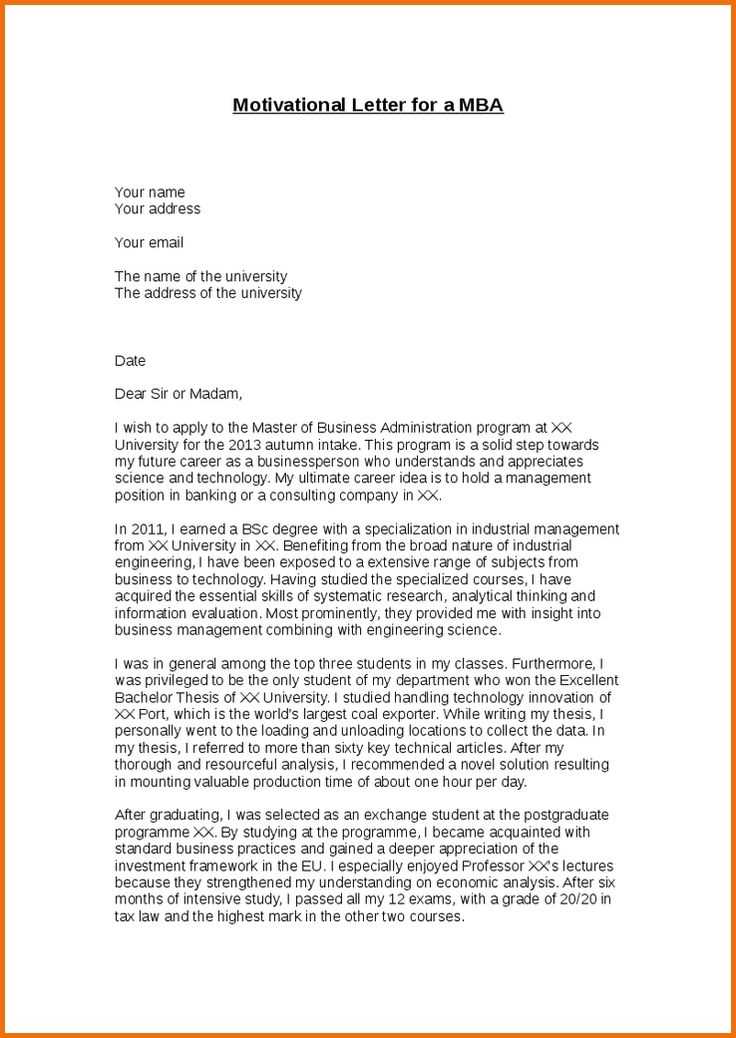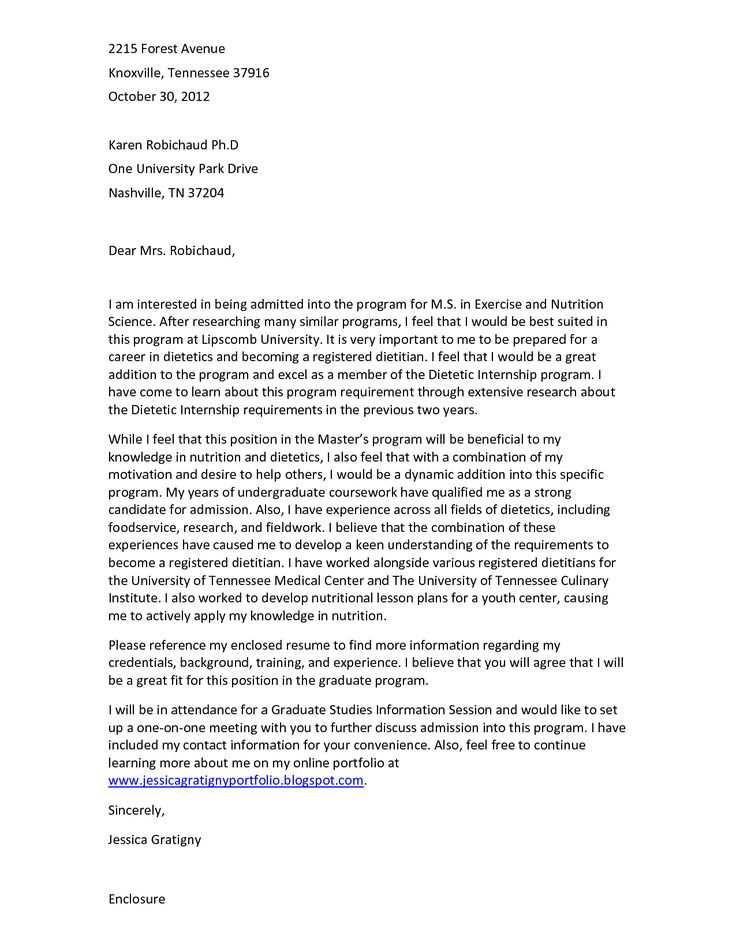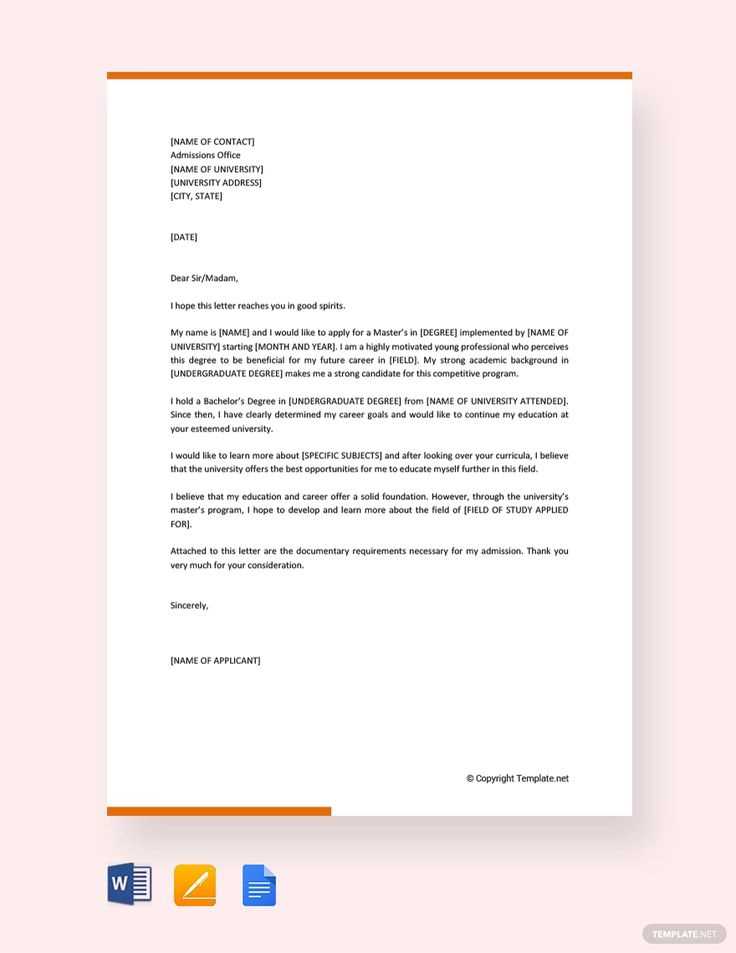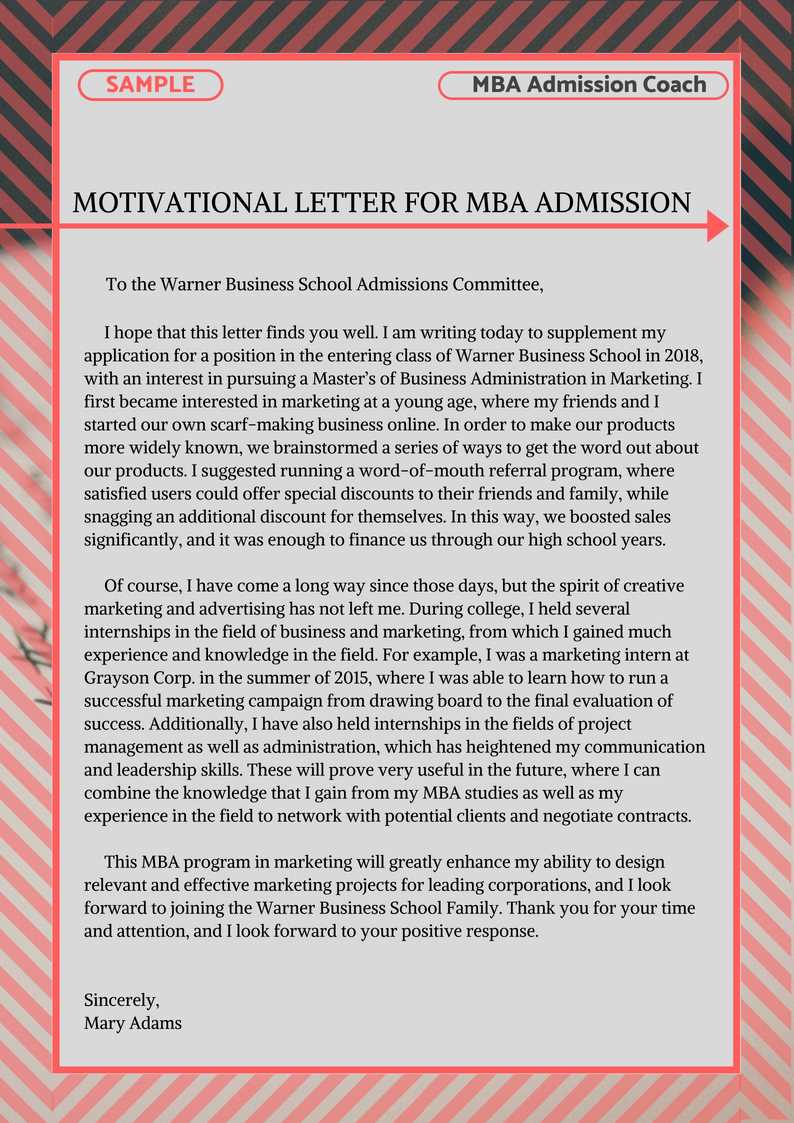Motivation Letter for Master Degree Template Guide

Creating a convincing personal statement is a critical step in the admissions process. It offers a chance to demonstrate your passion, skills, and suitability for the academic program you wish to join. By following a structured approach, you can highlight your motivations and qualifications clearly and effectively.
Essential Elements of a Strong Statement

Every effective application statement should include several key components. These help convey your objectives, experiences, and goals in a concise manner. Below are the core elements to consider:
- Introduction: A brief overview of who you are and why you’re interested in the program.
- Background: Relevant academic or professional experiences that demonstrate your capabilities.
- Connection to the Program: How your goals align with what the program offers.
- Future Aspirations: A clear description of how the program will help you achieve your career or academic objectives.
- Conclusion: A strong closing that reinforces your commitment and excitement.
Structure and Format

Maintaining a clear structure is vital for readability and impact. Use short paragraphs and transition sentences to ensure smooth flow between ideas. Stick to a professional tone while also allowing your personality to shine through.
Personalizing Your Statement

Tailor your content to reflect your unique experiences and aspirations. Avoid generic phrases, and instead, provide specific examples that showcase your strengths and ambitions. Personalization helps you stand out from other applicants.
Final Touches

Before submitting your application, carefully proofread your work to eliminate any errors or awkward phrasing. Seek feedback from others to ensure clarity and coherence. A polished statement makes a strong final impression.
htmlEdit
Importance of a Motivation Letter
Key Elements of a Strong Application
How to Organize Your Motivation Letter
Common Pitfalls to Avoid
Advice for Customizing Your Letter
Best Tips for the Final Check
In an application process, presenting a compelling and well-crafted narrative can make all the difference. This part plays a crucial role in communicating your unique attributes and aspirations to the selection committee. It should capture attention while aligning your skills and goals with the values of the program or opportunity you’re pursuing.
When crafting an impactful submission, there are key aspects to highlight. Clarity, conciseness, and a personalized touch are essential. Your ability to articulate why you are a good fit for the program is as important as showcasing what makes you stand out from other candidates.

Structure is essential to creating a coherent flow. Introduce yourself, explain your motivations, detail relevant experiences, and express your enthusiasm for what lies ahead. A logical progression ensures that your ideas are easily digestible and your commitment is evident throughout the text.
Avoid common mistakes such as overuse of generic phrases, failing to connect your experience to the goals of the program, or making your submission overly lengthy. Being authentic and precise will help maintain the reader’s interest and prevent unnecessary confusion.
Personalization is crucial. Addressing specific aspects of the opportunity and aligning your experience with its values will make your submission stand out. A generic approach risks being overlooked, while a tailored response reflects your true interest and understanding.
Before submitting, always double-check for clarity and coherence. Ensure your narrative is free from errors and that all points align with the purpose of your application. Ask others to review it for feedback, and make sure it reflects your best self.